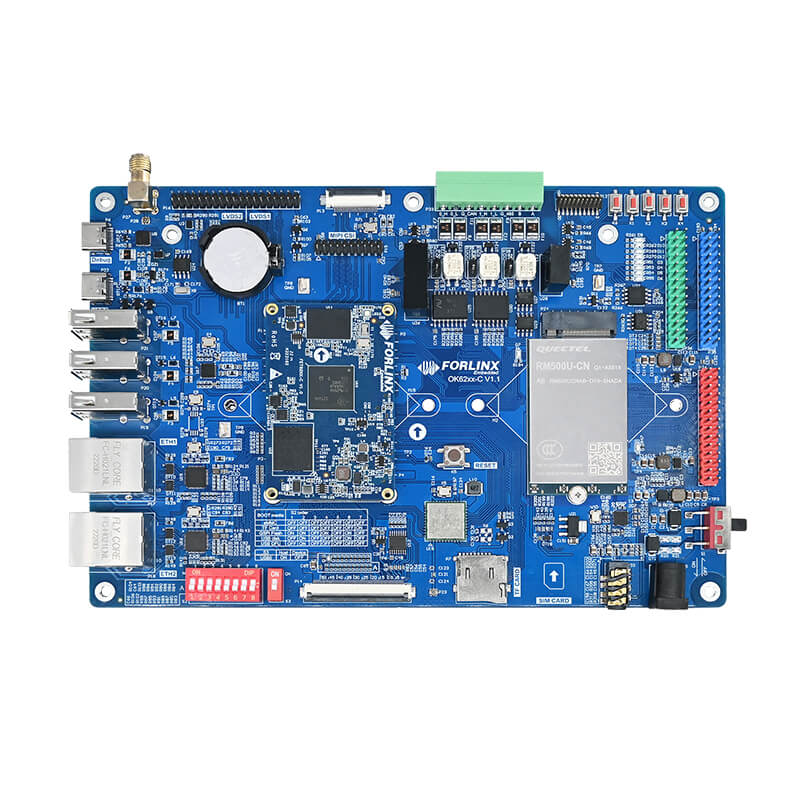
Common Interface Problems and Troubleshooting Ideas for AM62x Development Boards (2)
The AM62x processor from Texas Instruments (TI) is a new-generation, high-performance, and low-power processor widely utilized in industrial control, human-machine interaction, and edge computing. Common issues encountered in the development of the OK62xx-C development board have been summarized, drawing significant interest from many friends.
This article lists systematic troubleshooting ideas and solutions for various interface problems that may arise during the development process.

1. LVDS Problem
(1) Check whether the output mode of the LVDS display is consistent with the screen (VESA and JEIDA);
(2) Confirm whether the 100Ω resistors of each differential signal of the LVDS screen are soldered;
(3) Please incorporate a soft-start circuit for the LVDS power supply. Verify that the resistor at R247 is present to ensure Q3 turns on gradually, preventing the screen from pulling down VDD_5V;
(4) Measure whether the clock and data output are normal.
2. ENET Problem
(1) Confirm that the communication interface between the PHY chip and the MAC is consistent and that equal-length processing has been performed;
(2) Verify if the MDIO bus is properly pulled up and that the waveform appears normal; also, avoid splitting the MDIO wiring;
(3) Confirm whether the precision resistors meet the requirements;
(4) If the speed does not meet the requirements, check if each power supply and the reference ground are functioning properly;
(5) Detect whether the center tap of the network transformer is correct;
(6) Verify that the addresses of different PHY chips on the same bus do not conflict and are consistent with the software settings;
(7) Verify if the MDI data lines have been processed to equal lengths and if the impedance meets the specified requirements.
3. CAN Problem
(1) When there are multiple devices on the CAN bus, confirm whether there are 120Ω matching resistors at both ends of the devices;
(2) If the CAN devices cannot communicate, you can try to connect the reference grounds of the CAN devices to reduce common - mode interference.
4. UART Problem
(1) The serial port transceiver signals need to be cross - connected;
(2) Confirm whether the serial port tool configuration is correct, such as the baud rate.
(3) Measure whether the data output is normal.
5. RS485 Problem
(1) When there are multiple devices on the 485 bus, confirm whether there are 120Ω matching resistors at both ends of the devices;
(2) If the 485 devices cannot communicate, try to connect the reference grounds of the 485 devices to reduce common - mode interference;
(3) Since RS485 is a half - duplex transmission, some 485 chips require transceiver control signals. Confirm whether the chip driver has been added.
6. Audio Problem
(1) If the system cannot detect the audio chip, check whether the I2C bus communication is normal;
(2) If the chip can be mounted normally but there is no sound output, first check whether the I2S data waveform is output normally, and then check whether the audio output is normal.
7. PCIe Problem
(1) Confirm whether the PCIe device and the CPU use the same source clock and whether the frequency is correct;
(2) Detect whether there is an AC coupling capacitor for the PCIe transmission signal;
(3) Generally, an AC coupling capacitor has been added to the transmission signal at the PCIe device end, so there is no need to add another coupling capacitor at the receiving end.
8. GPIO Problem
When selecting a GPIO, confirm whether the signal is a Boot startup item pin. If so, do not use a pull-up or pull-down circuit when powering on, or a buffer chip needs to be added.




